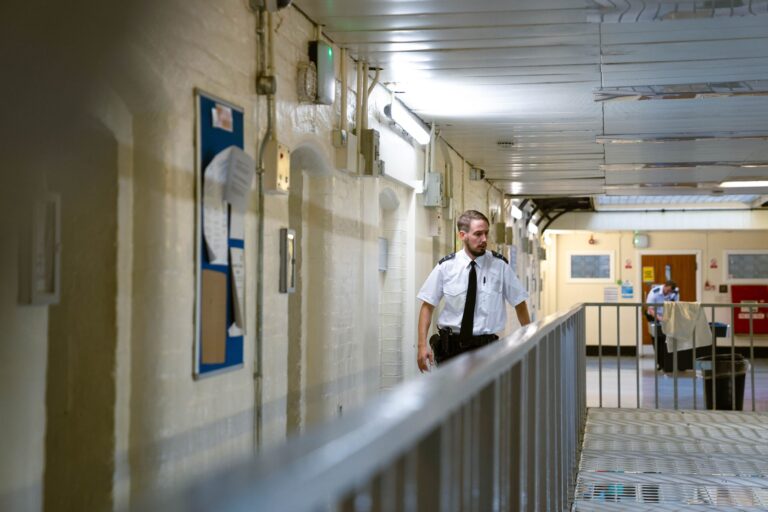Developing prison culture through Participatory Action Research: Findings from a new research study

Following up on the previous blog, Dr Rachel Gibson talks us through working with two prisons to develop their culture, using a Participatory Action Research (PAR) approach, and what this research suggests for prisons wanting to use PAR to develop their culture.

Dr Rachel GIbson
Chartered and Registered Forensic Psychologist,
Evidence & Insights Team, HMPPS
What was this study about and why did we take this approach?
How prisons operate, how people in them relate to each other, and what happens inside them have a huge impact on the people living or working there, and for the public. These wide ranging and serious impacts are why we should pay close attention to the culture of prisons. A positive prison culture contributes to the prison being safe, decent, hopeful, and supportive of change, progression and desistance. As well as positive outcomes for people living in custody, there are benefits for staff too, like improved safety, job satisfaction, and custodial behaviour. PAR is a reflective, cyclical process where people affected by or closest to an issue can explore, understand, and take action to address it. We know that those working and living in prisons will best understand their culture, and where work is needed. We hoped PAR would help staff and prisoners take responsibility for improving systems, test new approaches, and share learning, support staff and prisoner development and, ultimately, improve outcomes.
We worked with groups of staff and prisoners at both sites to explore, plan, act, observe, reflect, and re-plan activities to develop their culture. We refer to them as ‘co-researchers’ as they were directly involved in the decision-making process. We aimed to explore if PAR could help staff and prisoners to better understand their experiences of prison culture, and if PAR could be used to develop culture. We also wanted to see if there are any barriers to PAR, and the perceived impact for those involved.
The full report has now been published.
What we found
The prisons took different approaches to identify what they wanted to work on, but both groups identified consistent themes. This provided some insight into what staff and people in prison think is important for a positive culture in prisons, and what they think needed to improve:
- how changes in prison are communicated to staff and prisoners
- consistency in decision-making across units/wings.
- the need to reward and recognise the efforts of staff and prisoners
- increasing community-focused activities/opportunities
- ensuring opportunities for all
Co-researchers’ reflections on their involvement in the project, drew out four main themes:
- Having a voice and collaborative, equitable working relationships. Prisoners value the opportunity to have their voice heard and to work closely with a group of staff. Both staff and prisoners valued the joint, collaborative approach which helped develop relationships.
- Personal value from engaging in the project. For many of the prisoners, involvement brought significant personal benefit, like personal development, self-advocacy, breaking down barriers, improving communication and relationships.
- The value of PAR as an approach to culture change. Both groups strongly valued the approach in prisons and wanted the projects to continue after the research.
- Lead researcher’s role. Both sites valued involving external people to maintain momentum and provide structure
“I can’t make the prison a better place on my own but working in a group with staff members and other residents who all want to make a difference, can.” (prisoner)
“If I hadn’t been in these meetings, I would have behaved differently. I hear now how it is for staff, so i didn’t go nuclear.” (prisoner)
What the prisons achieved using PAR
Examples include:
- improvements to induction for new people coming into custody, like ensuring that emergency canteen packs are available, to help people avoid getting into debt in the early days of custody
- encouraging all staff to print off positive entries made onto the Computer-National Offender Management Information System (CNOMIS) for prisoners, to help encourage positive reinforcement
- communicating important messages to both staff and prisoners in new ways, through WayOutTV and reinstating staff briefings
- highlighting issues that are impacting negatively on staff and prisoners with those who can make a difference. For example, meetings with a kitchen manager about concerns regarding quality of food
- helping staff recognise the important role we all play in rehabilitation.
What we recommend from this research for prisons wanting to use PAR to develop their culture
Start smaller. Small goals can build momentum, and belief, to tackle larger issues later. Staff and prisoners need time and space to think about what impacts on them, before being able to think about what to do about it. Competing demands and priorities can mean larger ambitions may be unrealistic. Focusing on smaller, procedural things that impact positively on prison culture, may help groups remain motivated.
Clear direction. Working together on shared goals helps provide focus, structure, and a narrative to share with others. Creating a group identity can help bring the group together.
Be realistic about what you can achieve and manage expectations. There are some things that prisoners and staff can have little influence over but they still impact on the culture of prisons and their experiences. While this can be frustrating, it is important to discuss, share, and reflect on them. Groups should also be supported to recognise what they can’t change.
Visible sponsorship and commitment by senior leaders. Senior Leadership Team (SLT) buy-in and support is critical to success, particularly for prisoners to make progress and have time to engage. SLT support ensures staff can attend meetings, and both staff and prisoners can take forward ideas and suggestions. Senior leaders attending themselves regularly can help with this.
Communicating the aims of the group, the issues, and achievements, across the prison. This could include surveys, meetings, briefings, and newsletters. Ensuring communications are done in a procedurally just way is important for buy-in. Effective communication channels between all members of the group is also needed to maintain progress between meetings.
Representing as many views / perspectives as possible. It is important to consider how to represent all views, for example by getting feedback, and providing updates through newsletters. This should include both staff and prisoners and promote an environment where people feel safe to be honest and allowing time to listen to everyone.
One of the main findings was how valued the project was by all, and how a project like this can itself spark culture change. To achieve this, it is important for prisons to consider how to support and provide autonomy for staff to take on this work.
Consider if anyone external from the prison can facilitate these meetings. However, active involvement of co-researchers in organising and chairing meetings can help the group take ownership.
Creating space and opportunity for regular reflection can help to identify what is working well and not so well, to help shape future meetings and decisions. Building in protected time for regular review of achievements, progress made, and identifying next steps is also important.
To find out more, please contact: evidence@justice.gov.uk
Read the earlier blog on prison culture: “Where do we start if we want to change the culture of a prison?“.
